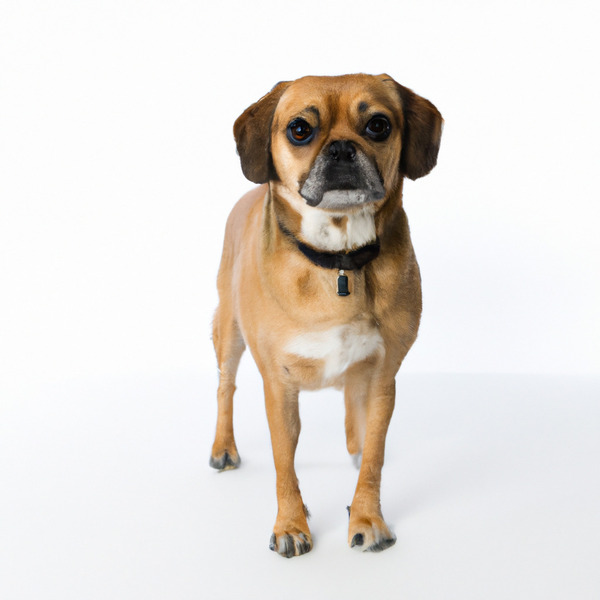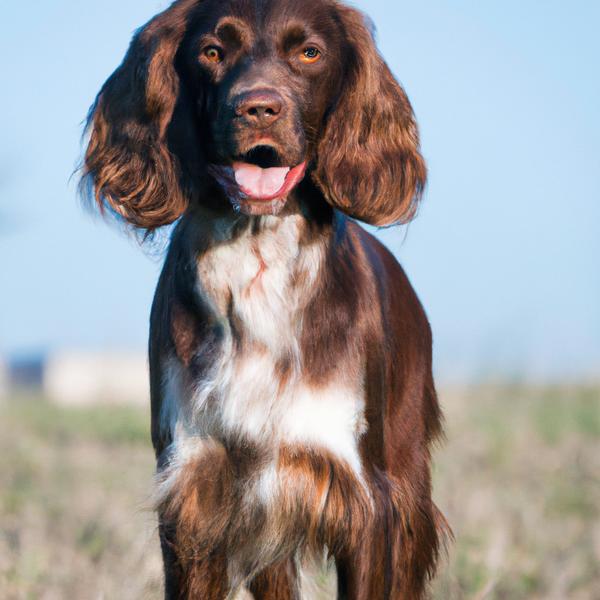Tibetan Wolfhound vs. Silkshund: Breed Differences and Similarities
Hypoallergenic
Are Tibetan Wolfhounds or Silkshunds hypoallergenic, or neither?
Unfortunately, neither Tibetan Wolfhound nor Silkshund are hypoallergenic, which may not make them the best choice for dog lovers who suffer from pet allergies.
Temperament
What are the personalities of Tibetan Wolfhound and Silkshund dogs?
Stubborn
Aloof
Dignified
Protective
Courageous
Intelligent
Patient
Loyal
Tempered
Sweet
Strong
Willed
Generous
Thoughtful
Playful
Stubborn
Alert
Courageous
Intelligent
Friendly
Responsive
Quick
Devoted
Lively
Joyful
Inquisitive
Clever
Shedding Level
Do Tibetan Wolfhounds shed more than Silkshunds, or which breed sheds more, Tibetan Wolfhounds or Silkshunds?
Tibetan Wolfhounds are moderate shedders, but regular brushing can reduce shedding and maintain coat health.
Silkshunds shed very little hair, making them a great choice for those who dislike excess hair in the house.
Watchdog Ability
Which dog breed makes a better watchdog, the Tibetan Wolfhound or Silkshund?
Choose a Tibetan Wolfhound if you want a top-notch watchdog. This breed takes guarding seriously, and may not require much training, though obedience or guard dog training can improve their skills.
Silkshunds are decent watchdogs - they'll alert their owner if something seems amiss.
Ancestry
What are the origins of Tibetan Wolfhound and Silkshund breeds?
Irish Wolfhound and Tibetan Mastiff
Dachshund and Silky Terrier
Date of Birth
When were Tibetan Wolfhound and Silkshund breeds first developed?
Unknown
Eye Color Possibilites
What are the eye colors of Tibetan Wolfhound and Silkshund dogs?
Brown
Brown
Nose Color Possibilites
What are the natural nose colors of Tibetan Wolfhound and Silkshund?
Black
Black
Brown
Coat Color Possibilites
What are the natural colors of the coat for Tibetan Wolfhound and Silkshund breeds?
Gray
Black
Fawn
Black
Brown
Blue
Cream
Fawn
Gray
Red
Isabella
Coat Length
What is the typical coat length for Tibetan Wolfhound and Silkshund breeds?
Tibetan Wolfhounds have medium-length coats.
Silkshunds have coats that can be either short or medium in length.
Coat Density
What is the density of the coat of Tibetan Wolfhound and Silkshund?
Coat Texture
What is the hair texture of Tibetan Wolfhound and Silkshund?
Wiry
Straight
Litter Size
What is the usual litter size for Tibetan Wolfhound and Silkshund?
A Tibetan Wolfhound can have a litter of 5-12 puppies on average. However, it's worth noting that the size of the litters can vary greatly. Factors that can influence litter size include the health of the mother, breeding history, and genetics.
A Silkshund can have a litter of 4-8 puppies on average. However, it's worth noting that the size of the litters can vary greatly. Factors that can influence litter size include the health of the mother, breeding history, and genetics.
Adaptability
The adaptability of Tibetan Wolfhound and Silkshund dogs is a well-known trait. They are known for being able to adjust well to different living environments and lifestyle changes.
Health Issues
Between Tibetan Wolfhound and Silkshund, which breed is more prone to health problems?
Tibetan Wolfhounds typically have low vet costs due to their good health, but it's important to monitor their health and seek vet care when necessary.
While the Silkshund breed is generally healthy, occasional vet check-ups are still necessary to address any health concerns.
Major Concerns
What are the major health concerns for Tibetan Wolfhound and Silkshund breeds?
Elbow Dysplasia
Hip Dysplasia
Osteochondritis Dissecans
Progressive Retinal Atrophy (PRA)
Liver Shunts
Gastric Dilation Volvulus (GDV) or Bloat
Acanthosis Nigricans
Intervertebral Disc Disease (IVDD)
Minor Concerns
What minor health issues should be kept in mind when owning Tibetan Wolfhound and Silkshund?
Ear Infections
Skin Problems
Anesthesia Sensitivity/Allergy
Patellar Luxation
Demodectic Mange
Cataracts
Pannus
Color Dilution Alopecia
Histiocytosis
Corneal Dystrophy
Sick Sinus Syndrome
Follicular Dysplasia
Cleft Lip or Palate
Legg-Calve Perthes Disease
Progressive Retinal Atrophy (PRA)
Mitral Valve Dysplasia
Occasional Tests
What occasional tests are recommended for Tibetan Wolfhound and Silkshund breeds?
X-Rays
Skin Evaluation
Blood Analysis
Full Body Physical Examination especially of the joints
Skin Evaluation
Blood And Urine Analysis
X-rays or other radiographic imaging
Electrocardiograph (ECG - measures rate and rhythm)
Energy
How do the energy levels of Tibetan Wolfhounds and Silkshunds compare?
Tibetan Wolfhounds are suitable for those with a balanced lifestyle as they have an average energy level.
Silkshunds are a good choice for a low-key lifestyle due to their low energy levels.
Social Needs
Tibetan Wolfhound vs Silkshund social needs comparison
Tibetan Wolfhound has average social needs and is less independent than other breeds.
Silkshund has above average social needs and thrives with interaction with humans and other dogs.
Exercise Needed
Tibetan Wolfhound vs Silkshund exercise need comparison.
Tibetan Wolfhounds require significant physical activity and suit those with an active lifestyle.
Silkshunds require minimal physical activity for a healthy lifestyle.
Sleeping Need
Which of the two sleeps the most/least: Tibetan Wolfhound or Silkshund?
Tibetan Wolfhound and Silkshund breeds are known to have moderate energy levels and normal sleep patterns, typically sleeping around 12-14 hours per day.
Tendency to Bark
Do Tibetan Wolfhounds or Silkshunds bark more/less frequently?
The Tibetan Wolfhound is a vocal breed that frequently barks and howls, and may not be suitable for those seeking a quiet companion.
Silkshunds bark moderately when necessary and may also bark due to certain triggers like fear, alarm, boredom, greeting, separation anxiety and compulsive barking.
Mouthiness
Mouthiness Comparison: Tibetan Wolfhound vs Silkshund?
Roaming urge
Tibetan Wolfhound vs Labrador: Running away tendency?
Prey Drive
Tibetan Wolfhound or Silkshund - which breed has a higher level of prey drive?
Activity Level
Which breed has higher energy, Tibetan Wolfhounds or Silkshunds?
Tibetan Wolfhounds are low-energy dogs. This breed make a great companion for a relatively inactive person. Tibetan Wolfhound dogs require a few short daily walks, and then they're happy snuggling next to you for the rest of the day.
Silkshunds are medium-energy dogs and typically enjoy socializing and playing casual or even sustained games of chase with other dogs. They may also have occasional periods of barking or racing around the house.
Tolerance of being left alone
Walks per Week
How many miles should Tibetan Wolfhound or Silkshund walk each week?
There's really no limit to how far you walk your dog as long as they're comfortable. For Tibetan Wolfhound, it's at least 7 miles / week. Just remember to build distance and stamina gradually over time.
There's really no limit to how far you walk your dog as long as they're comfortable. For Silkshund, it's at least 10 miles / week. Just remember to build distance and stamina gradually over time.
Activity per Day
Do Tibetan Wolfhounds or Silkshunds require more exercise?
In general most Tibetan Wolfhounds usually need at least 45 minutes of exercise daily. This can be spread across the day and include all sorts of high-energy activities, like walking, running and playing.
In general most Silkshunds usually need at least 60 minutes of exercise daily. This can be spread across the day and include all sorts of high-energy activities, like walking, running and playing.
Grooming
Which breed is easier to maintain in terms of grooming, Tibetan Wolfhounds or Silkshunds?
Tibetan Wolfhound and Silkshund are breeds of dogs that require an average amount of grooming effort.
Brushing Frequency
What is the recommended brushing frequency for Tibetan Wolfhound and Silkshund dogs?
Tibetan Wolfhound and Silkshund should be brushed at least once a week. Of course, you can give them more frequent brushes if you find that they are still shedding a lot.
Brushing Tools
What brushing tools are used for Tibetan Wolfhounds and Silkshunds?
Pin Brush
Comb
Nail Clipper
Pin Brush
Slicker Brush
Comb
Nail Clipper
Cups
How much food should be given to Tibetan Wolfhound or Silkshund in cups?
For an average 160-180 pound (73 - 82 kg) Tibetan Wolfhound feed 4 cups daily. But, keep in mind, the amount you feed is going to be dependent on the quality of the food you are feeding.
For an average 10-25 pound (5 - 11 kg) Silkshund feed 1 cups daily. But, keep in mind, the amount you feed is going to be dependent on the quality of the food you are feeding.
Daily Cost
Which breed has a higher daily cost, Tibetan Wolfhound or Silkshund?
The average cost of a Tibetan Wolfhound is somewhere $3.90 - $4.20 per day.
The average cost of a Silkshund is somewhere $1.10 - $1.40 per day.
Monthly Cost
Which breed has a higher monthly cost, Tibetan Wolfhound or Silkshund?
The average per month expenses of a Tibetan Wolfhound is between $112 - $126. This makes an average of $1344 - $1512 per year. It will be on the higher side when the dog is still small because it will need more frequent visits to the vet, shots.
The average per month expenses of a Silkshund is between $35 - $42. This makes an average of $420 - $504 per year. It will be on the higher side when the dog is still small because it will need more frequent visits to the vet, shots.
Intelligence
Comparing Intelligence: Tibetan Wolfhounds vs Silkshunds
Tibetan Wolfhound has below average obedience intelligence, but they excel in understanding human emotions.
Silkshunds are average in obedience intelligence but have a high IQ and may cause trouble if left unsupervised.
Sensitivity Level
How do Tibetan Wolfhound and Silkshund compare in sensitivity?
These breeds are more sensitive than others and easily overwhelmed by new surroundings and people. Tibetan Wolfhound and Silkshund need gentle handling and a calm, stable home environment with positive reinforcement training.
Affection Dependance
Which is the more affectionate dog breed: Tibetan Wolfhound vs Silkshund?
Apartment Friendly
Which breed is more apartment-friendly: Tibetan Wolfhound or Silkshund?
Tibetan Wolfhounds can do well in apartments with enough exercise and time outside, but a small yard would be ideal.
Silkshunds make excellent apartment dogs, being fairly active indoors and not requiring a yard.
Child Friendly
Do Tibetan Wolfhounds or Silkshunds have a friendlier temperament towards children?
Tibetan Wolfhound and Silkshund are average friendly dogs towards children.
Senior-friendly
Which dog is more suitable as a pet for the elderly - Tibetan Wolfhound or Silkshund?
Cat Friendly
Do Tibetan Wolfhound or Silkshund breeds have a better compatibility with cats?
Tibetan Wolfhounds and Silkshunds are an average cat friendly dog. They do well with cats, even more if raised together from puppyhood.
Dog Friendly
Which breed is more sociable with other dogs: Tibetan Wolfhound or Silkshund?
Tibetan Wolfhounds are friendly and active companions, and can be good family pets, though their friendliness towards other dogs may vary.
Silkshunds are less friendly towards other dogs, but can improve with socialization.
Pet friendly
How do Tibetan Wolfhound or Silkshund dogs interact with other pets?
Stranger Friendly
Which breed is more friendly with strangers: Tibetan Wolfhound or Silkshund?
Tibetan Wolfhounds are quick to announce strangers and can be standoffish or suspicious.
Silkshunds are averagely friendly around strangers but benefit from early socialisation.
Playfulness
Which breed is more playful between Tibetan Wolfhound and Silkshund?
Tibetan Wolfhounds have an average level of playfulness, enjoying playtime like most dogs but not excessively so.
Silkshunds are a playful breed that needs daily playtime to be happy.
Trainability
How do the trainability levels of Tibetan Wolfhounds and Silkshunds compare?
Tibetan Wolfhounds are usually easy to train but require consistency to fully obey commands.
Silkshunds are popular for their ease of training and quick learning ability.
Compare Tibetan Wolfhound with other breeds

Silkland Terrier
Tibetan Wolfhound vs Silkland Terrier

Chinaranian
Tibetan Wolfhound vs Chinaranian

Australian Eskimo
Tibetan Wolfhound vs Australian Eskimo

Belgian Malinois
Tibetan Wolfhound vs Belgian Malinois

Peke-A-Boo
Tibetan Wolfhound vs Peke-A-Boo

Puggle
Tibetan Wolfhound vs Puggle

Cava-Shell
Tibetan Wolfhound vs Cava-Shell

English Coonoodle
Tibetan Wolfhound vs English Coonoodle

Beardoodle
Tibetan Wolfhound vs Beardoodle

Field Spaniel
Tibetan Wolfhound vs Field Spaniel

Rhodesian Bernard
Tibetan Wolfhound vs Rhodesian Bernard

Pugalier
Tibetan Wolfhound vs Pugalier

